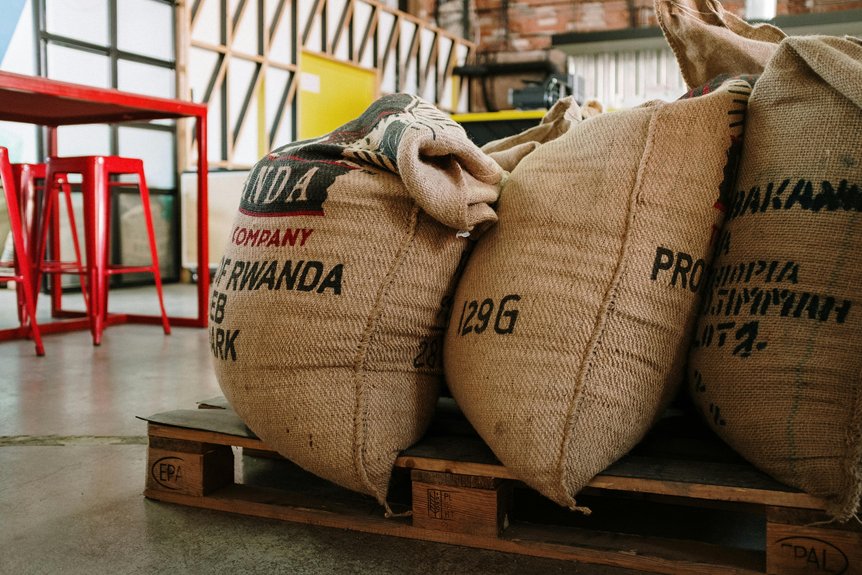Construction supplies, including steel, timber, and concrete, are essential materials utilised in building projects across the UK. Their prices can fluctuate due to various factors, such as inflation, global market shifts, and trade conflicts, which can significantly impact project costs and schedules.
To effectively manage these challenges, companies often employ strategic supply chain management techniques. This includes accurate forecasting, fostering strong relationships with suppliers, and proactively sourcing materials to mitigate potential delays and cost increases.
Understanding these dynamics is crucial for keeping construction projects on track. Industry professionals continuously seek innovative solutions to navigate these ongoing issues, ensuring that projects are completed efficiently and within budget.
Continue exploring to discover how experts in the field address these challenges effectively.
Navigating Material Price Volatility in Construction
Material price volatility presents a considerable challenge for construction projects, particularly when costs fluctuate unexpectedly during both the planning and execution phases. Such variations complicate accurate budget estimations for contractors, frequently resulting in cost overruns or project delays. Recent data shows a steady increase in material costs, with prices rising by an average of 3.4% in 2025 since 2024, adding further unpredictability to project budgeting efforts. Recent trends indicate a consistent rise in prices, with monthly changes reflecting a range of fluctuations. Key factors contributing to this instability include inflation, shifts in the global market, and ongoing trade conflicts, particularly impacting essential commodities such as steel, timber, copper, and aluminium. Additionally, tariffs on materials like steel and copper exacerbate unpredictability, elevating costs and complicating financial planning. Regional disparities and supply chain disruptions further influence pricing dynamics. To navigate these challenges effectively, contractors must remain vigilant in monitoring market trends and cultivating robust relationships with suppliers. This proactive approach is vital for managing the risks associated with ongoing price volatility in the construction sector.
Strategic Approaches for Supply Chain Management
Effective supply chain management in construction necessitates strategic planning and well-organised workflows. To ensure efficiency, companies prioritise three fundamental approaches.
Forecasting and Planning: Businesses utilise historical data, market trends, and project management software to accurately predict material requirements. By integrating forecasts with order planning, they mitigate the risk of over- or under-ordering, thus enhancing overall operational effectiveness. Additionally, effective forecasting allows for advanced sourcing of materials, reducing the likelihood of delays caused by last-minute procurement issues. Accurate forecasting is vital for maintaining project timelines and budgets.
Process Standardisation: Teams streamline their operations by mapping current workflows and employing digital tools for bidding, sourcing, and tracking. This standardisation minimises delays and confusion, while also reinforcing accountability across various projects.
Vendor Relationships: Establishing long-term partnerships with local suppliers guarantees reliable deliveries, whilst diversifying the vendor base mitigates dependency risks. Open communication and loyalty cultivate trust, resulting in smoother logistics and improved quality.
These strategies enable construction teams to remain interconnected and well-prepared in an ever-evolving landscape.
Adapting to Workforce and Technical Challenges
The construction industry in the UK is facing increasing challenges related to workforce availability and technological advancements. A significant shortage of skilled workers is anticipated, with a substantial number required in the coming years. Monthly job vacancies remain high, reflecting the ongoing demand for talent within the sector. Many contractors are experiencing difficulties in filling various positions, particularly in the skilled trades. Additionally, the average age of craft workers is rising, indicating an ageing workforce that’s approaching retirement. In response to these challenges, companies are prioritising upskilling their current employees while also embracing new technologies such as drones, Building Information Modelling (BIM), and robotics. The industry is projected to need 454,000 additional workers by 2025, highlighting the critical importance of developing a robust talent pipeline. These initiatives are crucial for meeting project deadlines, managing costs, and sustaining growth within the industry. By fostering a sense of community and shared purpose, the construction sector can navigate its ongoing evolution and adapt to the demands of the modern marketplace.
Conclusion
In conclusion, managing construction supplies necessitates an awareness of fluctuating material costs, effective supply chain strategies, and the ability to adapt to workforce and technical challenges. By remaining informed, planning ahead, and establishing flexible processes, construction projects in the UK can better navigate uncertainties.
Price volatility and labour issues continue to be significant concerns; however, proactive management plays a crucial role in ensuring timely completion and maintaining cost control. Overall, a strategic approach empowers construction firms to tackle these challenges with greater confidence and deliver successful outcomes.
Emphasising strong supplier relationships and harnessing technology can further enhance efficiency in the procurement process, ultimately leading to improved project delivery. As the construction landscape evolves, staying ahead of market trends will be vital for achieving sustained success.

